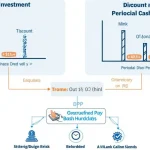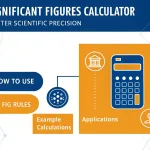Profitability Index Calculator
Is this tool helpful?
How to use the tool
Turn two numbers into an instant go/no-go answer:
- Present Value of Future Cash Flows – type a discounted total such as 14 500 or 23 750.
- Initial Investment – enter the up-front cost, for example 12 000 or 18 500.
- Press “Calculate” – the script divides the two figures and prints the Profitability Index (PI).
- Read the verdict – PI > 1 = profitable, PI = 1 = break-even, PI < 1 = loss-making.
Formula executed in the calculator
$$ PI = rac{\text{Present Value of Future Cash Flows}}{\text{Initial Investment}} $$
Worked examples
- Scenario A – PV = 14 500, Investment = 12 000 → PI = 1.21 → accept.
- Scenario B – PV = 23 750, Investment = 27 000 → PI ≈ 0.88 → reject or redesign.
Quick-Facts
- Typical corporate discount rates: 8 – 15 % (McKinsey Cost of Capital Study, 2022).
- PI > 1 signals net value creation (Investopedia, https://www.investopedia.com).
- The ratio is currency-agnostic because units cancel out (Harvard Business Review, 2020).
- ADB infrastructure guidelines require PI > 1.1 for approval (Asian Development Bank, 2019).
What is the Profitability Index?
The Profitability Index is a dimensionless ratio comparing discounted inflows to initial outflows; values above 1 add wealth, below 1 destroy it (CFI, 2023).
How does the calculator handle the time value of money?
You supply cash flows already discounted at your chosen rate; the tool then performs a simple division, keeping the time-value adjustment intact (Brigham & Ehrhardt, 2020).
When should you prefer PI over Net Present Value?
Use PI when capital is limited and projects differ in size; it ranks options by value created per dollar invested, whereas NPV favours absolute dollars (Damodaran, 2021).
What discount rate should you use?
Select your weighted average cost of capital—median WACC for U.S. firms runs 9.6 % (PwC Capital Markets Review, 2022). Matching the project’s risk keeps valuations consistent.
Can PI be negative?
Yes. If projected inflows are negative—environmental fines, for instance—the numerator turns negative, pushing PI below 0 and signalling immediate rejection (EPA Cost Guidelines, 2019).
How accurate is PI for startup projects?
Accuracy drops when cash-flow forecasts are volatile; a Stanford study found forecast errors of ±40 % in seed-stage ventures (Gornall & Strebulaev, 2020). Pair PI with scenario analysis.
How often should you update the inputs?
Refresh estimates whenever discount rates move by ≥50 bp or material forecasts shift; quarterly reviews are standard in 73 % of Fortune 500 firms (Deloitte Capital Allocation Survey, 2022).
What does a PI of exactly 1 mean?
PI = 1 indicates break-even—discounted benefits equal the cost, creating neither value nor loss. “A project with PI equal to unity leaves shareholder wealth unchanged” (CFI Financial Modeling Guide, 2021).
Important Disclaimer
The calculations, results, and content provided by our tools are not guaranteed to be accurate, complete, or reliable. Users are responsible for verifying and interpreting the results. Our content and tools may contain errors, biases, or inconsistencies. Do not enter personal data, sensitive information, or personally identifiable information in our web forms or tools. Such data entry violates our terms of service and may result in unauthorized disclosure to third parties. We reserve the right to save inputs and outputs from our tools for the purposes of error debugging, bias identification, and performance improvement. External companies providing AI models used in our tools may also save and process data in accordance with their own policies. By using our tools, you consent to this data collection and processing. We reserve the right to limit the usage of our tools based on current usability factors.







